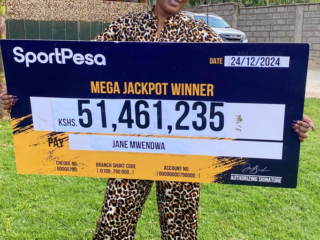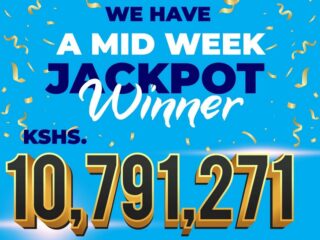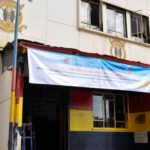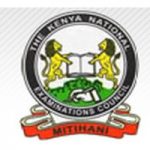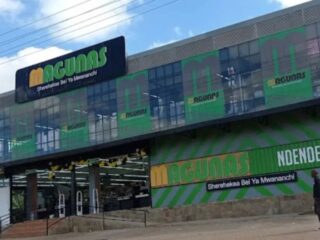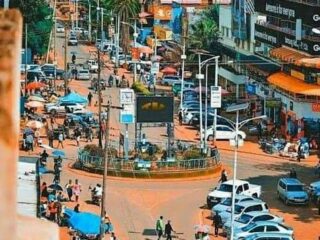Currency or forex trading can be described as the process of trading currency pairs in the foreign exchange market.
The exchange rate a currency pair trades for depends on demand and supply which is affected by the market trend, value of currency pair, and global incidents, among others. In this article, you will be learning the top 10 things you need to know about currency trading in Kenya.
#1. Forex Trading is regulated by the CMA
The Capital Market Authority (CMA) in Kenya is a statutory body established by law to oversee activities in the capital market.
The CMA oversees online forex brokers and derivative providers as well as other market participants such as stockbrokers, depositories etc.
The CMA has strict minimum capital requirements that brokers must meet, and they are subject to other checks to ensure those heading the brokerage are fit and proper to manage customer funds.
The CMA also has powers to license, investigate, and sanction forex brokers. It can also approach the court to move for liquidation of a broker that is insolvent.
#2. CMA has Licensed Only 7 Forex Brokers
Due to the stringent conditions set for online forex broker licensing in Kenya, only a handful of forex brokers met the requirements and currently hold CMA licenses as per this list of licensees. This means that these brokers are reliable and should they mismanage your funds, the CMA will take them to court and move for their liquidation so you can get your money back.
Licensing requirements are strict in Kenya, and it is possible that some brokers have applied for licenses and are awaiting approval, but you should not trade with them until the approval process is complete and you see their names on the CMA list of licensees published and updated regularly on its website.
#3. Forex Brokers in Kenya are Not Market Makers
CMA licensed online forex brokers are not market makers, meaning they are non-dealing desk brokers that link you directly to liquidity providers such as banks.
While market makers take the opposite side of your trade and give you a price that has been increased so that they gain from spread, non-market makers pass your order straight to liquidity providers, and the price you see is raw, or exactly what the liquidity providers are offering. This means the spread with CMA licensed brokers is tighter.
.
#4. You Need At Least $5 to Trade Forex
The broker you decide to trade with and the platform you want to use will determine the starting cost of currency trading. Notwithstanding, most Kenyan brokers only require about a $5 minimum deposit to start as a forex trader.
Some of the brokers that take as low as $5 for a start include XM Forex, FxPesa, and HotForex. It is important to note, however, that making substantial profits with such a minute investment is so difficult.
#5. You can Trade with More Than One Broker
Trading with multiple brokers allows you to carry out a comparison to figure out which broker’s fees, spread, or leverage align with your financial or trading goals. You will also watch out for stop loss hunting in individual brokers.
#6. No Exchange Traded Derivative for Forex
A derivative is a financial contract that relies on an underlying asset for its existence. Some are traded over the counter like CFDs but some are traded on an exchange with standardized contract sizes. These derivatives that trade on an exchange like options and futures, help with the management of risk.
A futures contract gives you the right to buy or sell a specific quantity of an underlying (which could be currency) at a specific price and future date.
An option contract gives you the right but you are not obliged to buy or sell a specific quantity of the underlying (which could be currency), at a specific price and future date, upon payment of a premium to the option writer.
Both futures and options make risk management possible. In Kenya, the NEXT derivative exchange exists and they allow you trade only equity index futures, and single stock futures.
However, speaking of ETDs for currency or interest rates which you can use to hedge currency risk, they aren’t available yet in Kenya.
As a result of this, you will need to adopt other means and strategies for managing risk such as using stop loss orders, take profit orders, proper education, and portfolio diversification.
#7. CMA has allowed a max Leverage of 1:400
Leverage is the act of borrowing money from a broker in a forex market to invest in an asset. The CMA recommends 1:400 maximum leverage for forex brokers to offer traders.
A 1:400 leverage ratio means that to open an order, you will need to deposit just 1/400 of the total contract value while your broker lends you the rest. You can control 400 times what you would have been able to without leverage.
An example of leverage in a EUR/USD currency pair is when you invest $2,000 in a trade. With the leverage of 1:400, you can open a trade worth ($2,000 x400) = $ 800,000.
However, while using such high leverage like 1:400, a small market move against you will see you blown out of the market when compared to someone who uses lower leverage of say 1:30.
The cap of 1:400 on leverage by the CMA is much higher the leverage restrictions in the UK, and other developed countries like Australia, Canada etc. as they have also placed even more strict restrictions on leverage offered on CFD products. This is because most of the traders lose when using excessive leverage.
As per this comparison of the forex brokers which includes the data of the percentage of losing traders, on average, over 70% of the retail traders are losing their money at regulated brokers. But CMA regulated brokers don’t have to disclose this data publicly.
This leverage restriction of 1:400 Is although technically lower than what unregulated brokers offer, but it can still be abused just like if you are allowed up to 1:1000 as is applicable in most African countries without forex regulation. It is always safer to go for lower leverage, especially if you are not an expert level trader.
#8. Deposit/Withdrawal via MPesa Are Faster Than Via Bank Transfer
Making deposits and withdrawals through MPesa mobile money is faster than making use of bank transfer. There are around six forex brokers in Kenya that accept Mpesa for deposits & withdrawals, and the minimum deposit is $5 as FXPesa.
On average, deposits and withdrawals through MPesa take place instantly. Bank transfer on the other hand takes up to 24 hours.
#9. Interest Rates Affect Forex Trading
Interest rate is sometimes called the ‘price of money’. Every country has a currency, and every currency has an interest rate which is set by the central bank of the country.
This interest rate can be increased or lowered for reasons such as fighting inflation. Today we see the USA, Britain, EU and others, raising interest rates to lower inflation.
Firstly, lowering the interest rate weakens a currency but makes exports of the country cheaper and more attractive to foreign buyers.
Secondly, raising an interest rate makes the currency stronger, and attracts foreign investment but makes lending more expensive, and exports less attractive.
In the forex market, interest rates are so important that exchange rates begin to move even before central banks meet to decide the rates, and before major economic forecasts and data come out.
A simple statement on interest rates from a central bank governor can send exchange rates crashing. This is how important interest rates are.
Secondly, experienced currency traders always want to borrow at a lower interest rate and sell at a higher interest rate and this is called a carry trade.
In a carry trade, when you use a currency with a lower interest rate to buy a currency with a higher interest rate, you are paid the difference in interest rates if you hold the position overnight.
However, if you use a currency with a higher interest rate to buy a currency with a lower interest rate and hold the position overnight, you will be debited for the interest rate differential. Interest rates are very important in currency trading.
#10. Fundamental & Technical Analysis are Important
Firstly, fundamental analysis studies political and socio-economic factors and how they can affect exchange rates.
For example, if Kenya is battling high inflation, the central bank is expected to increase interest rates- this is an economic factor. The higher the demand for a country’s currency, the higher the exchange rate climbs- this is fundamental.
Secondly, technical analysis uses various charts and indicators to study price movement patterns in the past, and relate it to expected movement patterns in the future. Technical analysts seem to think history repeats itself.
For example, price trends have been observed to reverse at round figure numbers and not decimals. This may be due to the fact that the human mind prefers to plan strategies using round figures. This is something technical analysis can tell you.
You need to understand both fundamental and technical analysis to be a complete currency trader as both come in handy.
Conclusion
The forex market is very volatile and if you are considering trading, you need to start off by acquiring knowledge.
Risk management is also fundamental, as stop loss orders let you automatically exit the market once your losses reach a certain level. Having good trading psychology and emotional control is also beneficial.



